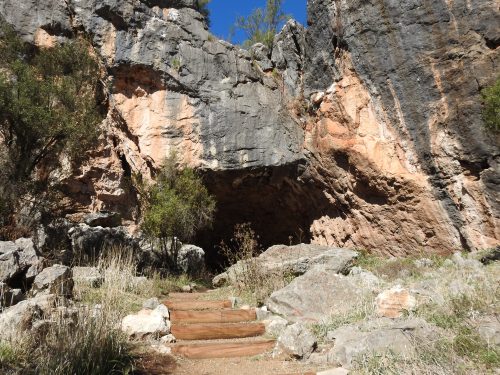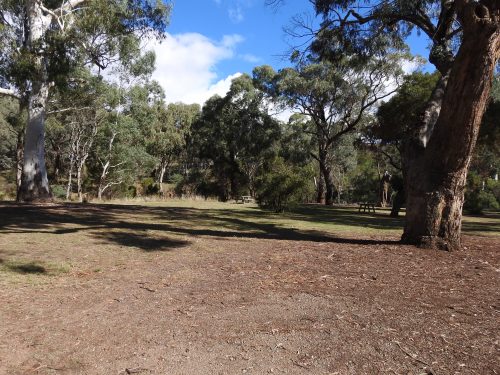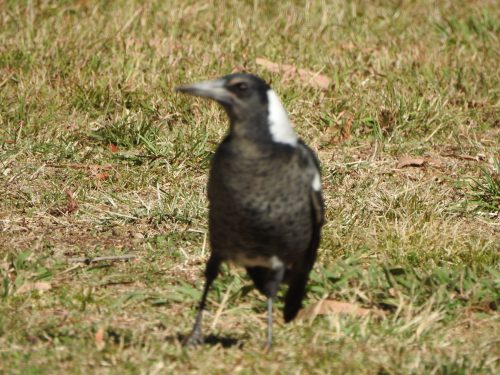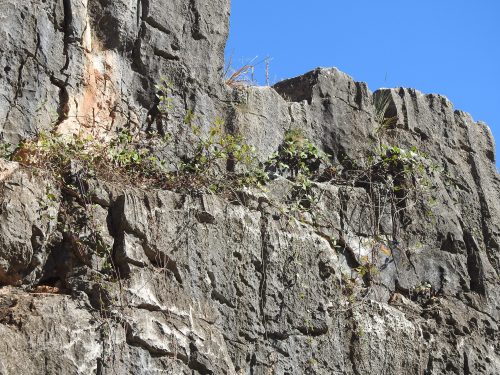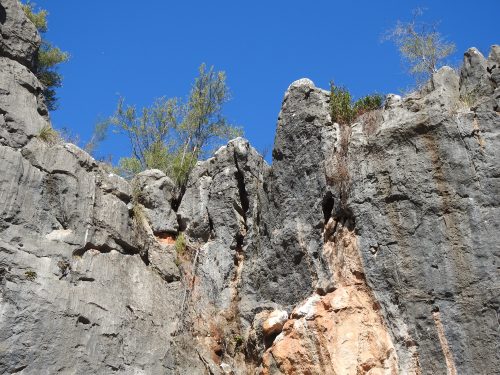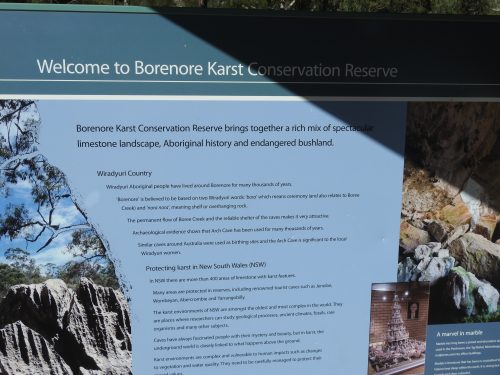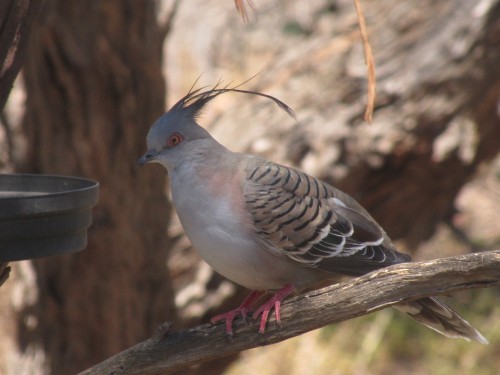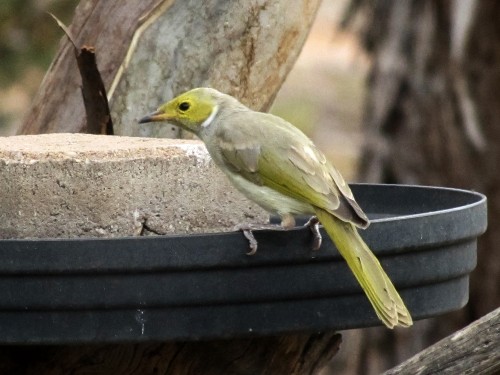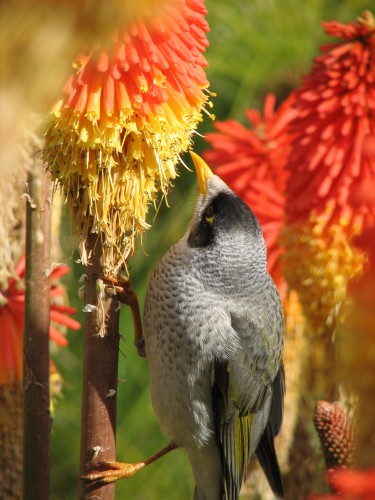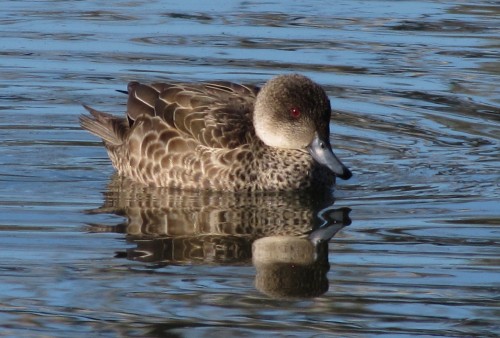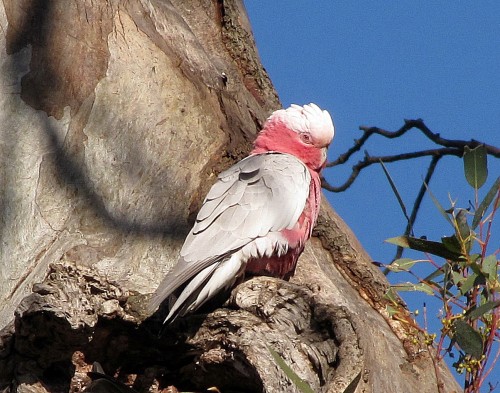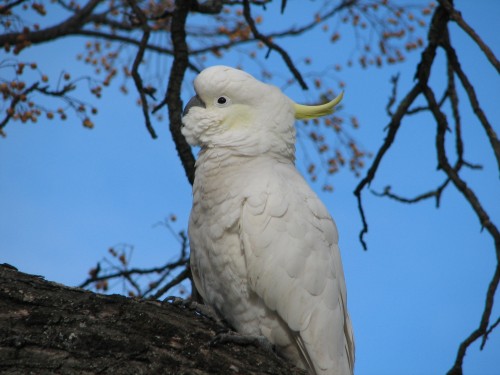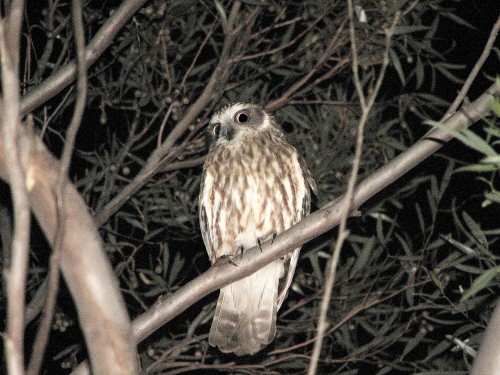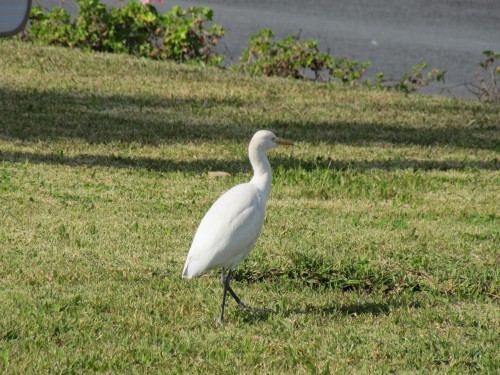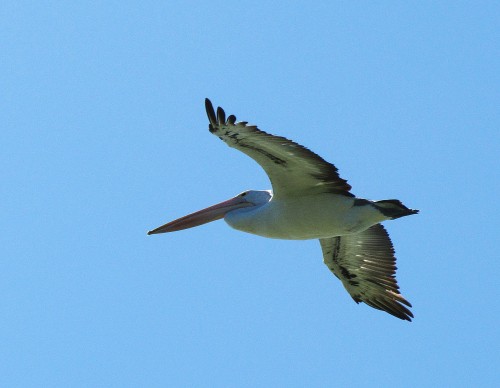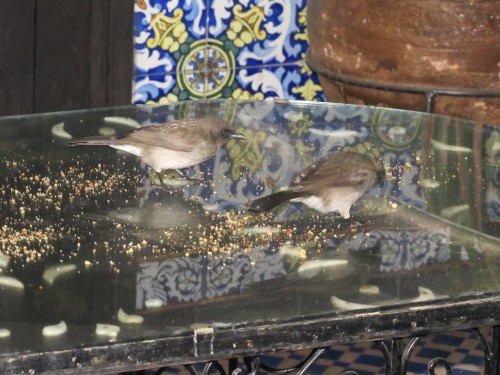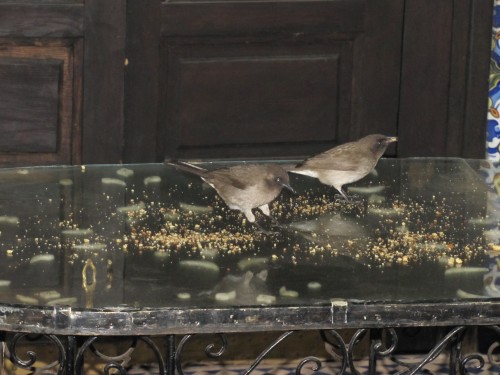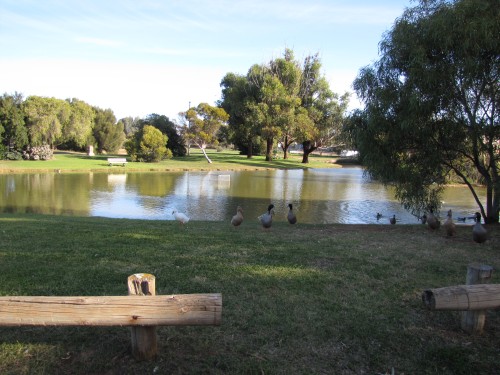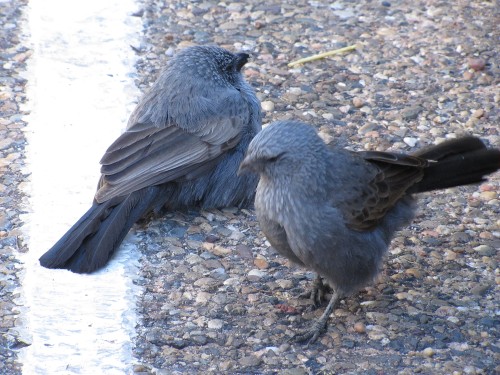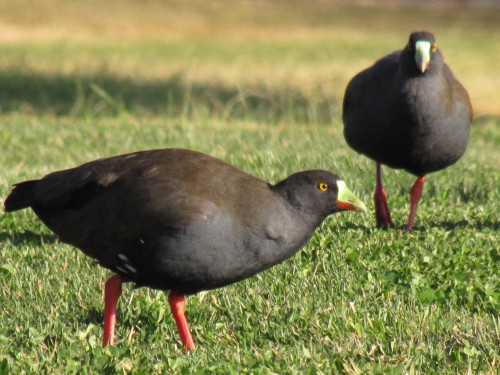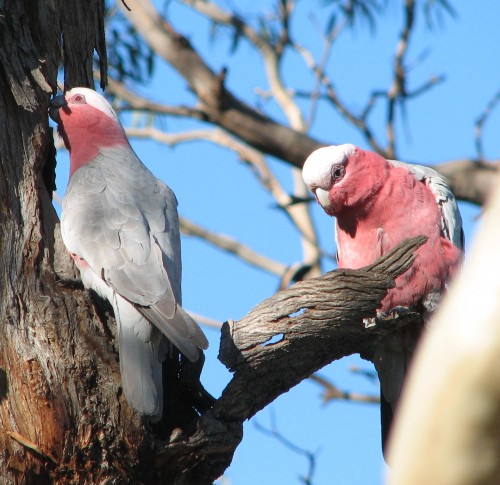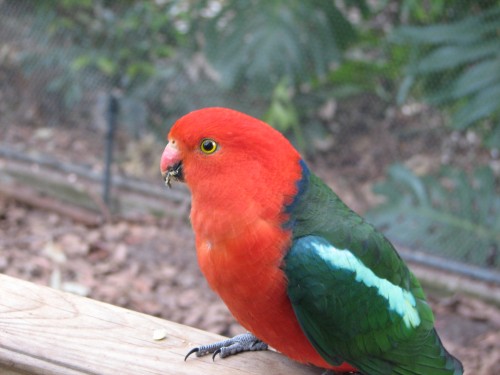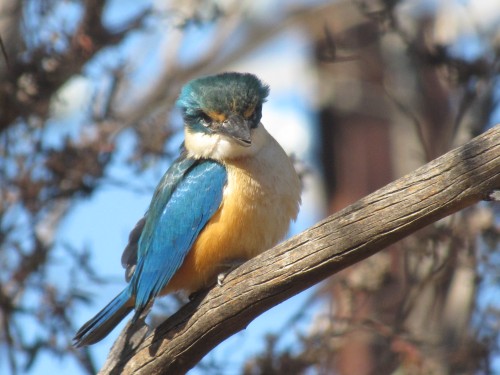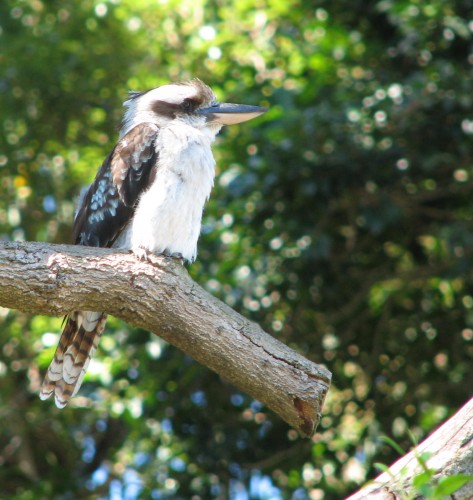Borenore Karst Conservation Reserve, Orange
On my way to Sydney early in May of this year, I travelled between Lake Cargelligo and the city of Orange in New South Wales. As I approached Orange, I saw a tourist sign pointing to the Borenore Karst Conservation Reserve. I had been looking for a place to pull off the road, have lunch and do a spot of birding while I ate. This reserve seemed to fit the criteria well, so I pulled off onto a rocky dirt track leading down into the valley below. While it was a little bumpy, a non-4WD car can negotiate this track with care. There were no such concerns with my Ford Ranger 4WD.
The picnic ground (photo above) was pleasant with scattered trees and several picnic tables for visitors to use. While I ate my lunch I made a list of the birds seen or heard.
Bird List:
- Australian Magpie (photo below)
- Australian Raven
- Noisy Miner
- Laughing Kookaburra
- Red Wattlebird
- Galah
- White-plumed Honeyeater
- Sulphur-crested Cockatoo
- Crimson Rosella
- Rufous Whistler
- Striated Pardalote
- Welcome Swallow
It is not a big list, but the wind was chilly and it was just after midday which is generally not a good time for birding. My opinion is that this would be a great place to go birding on a sunny, spring day, preferably early in the morning or just before sunset.
The main attraction of this reserve is the cave next to the picnic ground. In the photos below (and above) you can see some of the rocky landscape which surrounds the picnic grounds. There is a walk visitors can take through one of the caves which I would like to have explored, but my torch was in a hard to get to box in the back of the ute. I really needed to get on the road again, anyway, so I gave the cave exploration a miss. I will be better prepared next time I pass this way.
Birding is easy
It has a been a long time since I wrote a basic post about birding.
Some years ago I wrote a series of 21 articles called How to be a Birder.
This post is not an update on that series. This is just a heads-up to new readers of this site. I was encouraged to write this in response to an article I recently read here. That article is for American readers. What I have to say is largely for my Australian readers – but the same principles apply nearly worldwide.
Birding is really easy
Birding is quite easy. Just glance out of the window into your garden. Do you see any birds? Perhaps you can see a pigeon or a dove or possibly a sparrow. You’ve just become a birder. One of our common birds here in South Australia is a Crested Pigeon, shown below. (Okay – some of you will know it as a “Top Knot” Pigeon, but strictly speaking, that official name belongs to a bird found in the eastern parts of Australia.)
Binoculars and Bird Baths
I usually keep a cheap pair of binoculars handy where I can get to them quickly. We often spend a good part of the day in our sunroom which overlooks a part of the garden. A large picture window in this room gives us a great view of several bird baths. The binoculars give me a great view of any birds which come for a drink or a bath. Installing a bird bath in your garden, even a small garden, can help to bring the birds closer for you to watch – birds like the honeyeater in the next photo.
Into the garden
A short stroll out into the garden or even down the street can reveal plenty more birds. Keep a watch out for any movement in plants, bushes and up in the branches of any trees growing nearby. Pay special attention to any flowers you see – Australian honeyeaters and parrots love the flowers of both native Australian plants as well as exotic plants. The Noisy Miner shown in the photo below is sure enjoying a feed from a red hot poker flower.
Go for a picnic
Another good way to become a birder and to begin enjoying our birds is to go for a picnic. This could be to a local park, a nearby river, lake or beach or to your nearest botanic gardens. In these places, you are sure to find a good variety of birds, especially if there is a water feature or natural body of water. Becuase such places often have crowds of people, many of the birds will have become quite accustomed to humans and you will be able to get up quite close. Near and in the water you will find ducks, geese, herons, egrets, grebes, coots, moorhens, cormorants and many more that I haven’t listed here.
Although it may be tempting and satisfying, please do not feed the birds. Human food, especially bread, is not suitable for Australian birds. In fact, it can kill them.
Go hiking or camping
Australia has hundreds of National Parks and Reserves in every state. These locations are almost always excellent places to go hiking, having a barbecue or picnic or even camp overnight or for longer. Because these areas are usually natural bushland, the birding can also be wonderful, especially in spring here in Australia when many birds are nesting. Keep on the lookout for birds in the bushes and any vegetation, as well as higher up in the branches of the trees. The photo of a Galah shown below was taken at a wetland area near my home. The wetlands area is actually a sewage installation, beautifully landscaped with many bushes and trees.
Birding while travelling
Warning: keep your eyes on the road and on the traffic all around you!
Yes, I also watch out for the birds I see while travelling. We have relatives and friends in many parts of Australia and visiting them sometimes entails many hours – and sometimes days – of travelling our countryside. As we go along I keep my eyes on the traffic and road conditions, but over many years, I have also become adept at watching out for any birds on the side of the road or flying over the road. Birds of prey like eagles and hawks are common along our country highways, as are ravens, choughs, magpies and currawongs. Sometimes this can be frustrating when it comes to identifying them as we speed by in our car, only getting a brief glimpse of the bird.
From time to time, it is safe to stop and get a closer look at a bird, even getting a photo if I have the camera handy. A few years ago I was driving slowly in an Adelaide street after dropping off my wife at a hospital. I was able to stop safely and quickly and get the photo of a Sulphur-crested Cockatoo which I have shown below. There was a small flock of these lovely birds right there in a suburban street tree.
Birding at night
For some people, this might be a little difficult, depending on the environment surrounding their home. It possibly wouldn’t work if you live in a high-rise apartment in the heart of a city. On the other hand, we live on the edge of a large country town with plenty of natural and planted scrub all around. We quite often switch off the television at night; there’s often nothing worth watching anyway.
The area around our home is often very quiet with very little traffic. On these occasions, we occasionally hear nocturnal birds such as owls, frogmouths or nightjars calling. The Southern Boobook Owl shown below was photographed in our garden some years ago.
Birding while commuting
One way of usefully using the time spent commuting is to do some casual birding from the bus, tram or train. I haven’t done this much in my life because I always drove a car to work. To illustrate my point, we recently did a bus tour of Morocco. Wonderful country. Along the way I was able to see quite a few birds while travelling along, even getting the occasional photo, such as the egret shown below, taken from the bus. On the other hand, travelling at 300 kph in the high-speed trains in Spain is just a little too fast to be watching out for any birds. Exhilarating, yes, but difficult.
More unusual birding places
In Bed: I like lingering in bed some mornings, trying to identify the bird calls outside without actually seeing them. This is particularly enjoyable when out bush camping, or in our caravan.
In church: I must confess that I have taken notice of birds while sitting in church. Our church has several windows which give me a good, but limited, view outside. Not getting distracted from the sermon can be a challenge.
At a funeral: Again, I confess to sometimes being distracted by birds at a funeral, especially during the committal if this is held outdoors. I refrain from taking my camera or binoculars on such occasions. The same applies to when I am in church.
In a plane: It is possible to see some high flying birds from planes, but I am talking about birds seen on the tarmac while waiting for the plane to leave, or while taxiing on the runway. I managed to see birds from the window of a plane in Adelaide, Kuala Lumpur, Dubai and Addis Ababa. Now if you add birds seen from the terminal while waiting for a flight, the list gets longer.
On a canoe, boat or ship: I have watched birds from my canoe on many occasions. I have also taken many photos from a friend’s boat on a nearby lake (see the pelican below). I even did some birding while travelling on a ship (ferry) from Morocco to Spain.
In hospital: Thankfully, I have only been in hospital on a handful of occasions. I have, however, visited people in hospital. Whenever there is a suitable window with a garden outside, there is always the potential to even be a birder while recuperating in bed.
How about you?
- Over to my readers; where do you like to go birding?
- What unusual places have you been birding?
- Leave a comment or two; I would really appreciate that.
Good birding,
Trevor
Postscript: In a restaurant: we stayed in a beautiful riad in Marrakech, Morocco. Because it was open to the sky, the birds were free to fly into the restaurant area. The owners even put out seed to attract them. See the photos below.
A very short birding trip in Peterborough
Last week we spent several days visiting family in Peterborough in the mid-north of South Australia. The main focus of this trip was a belated Christmas family get together. My son’s family who were over from Sydney for a few weeks was the main focus, but it was also great to catch up with family members on my wife’s side of the family.
The weather was far too hot to do anything other than casual birding in the back yard. The only interesting sighting over the four days was a solitary Little Eagle soaring majestically overhead early one morning. The Peterborough area is an interesting region from a birding point of view. While many of the species seen further south are present, one can also see some of the more arid region birds around the town and in the nearby farming areas. This is about as far south as some of these arid dwelling birds venture.
One spot I always try to check out when visiting Peterborough is Victoria Park. This park, next to the town’s lovely swimming pool and caravan park features an artificial lake (see photo above). On and around this lake I have recorded quite a good range of water birds, one of the few spots in the region with enough water to sustain a small population of such species.
On this occasion we were actually on our way home. We left early to beat most of the heat of later in the day. I only drove though the park and didn’t actually stop. I guess that our visit was no longer than 2 minutes – if that. During that short time I saw the following species:
- Apostlebird
- White-winged Chough
- Australian Magpie
- Black-tailed Native-hen
- Pacific Black Duck
- Australian Wood Duck
- Mallard
- Australian Magpie Lark
- Crested Pigeon
- Galah
- Red Rumped Parrot
- Red Wattlebird
- Little Raven
It is not a long list but it does contain two interesting sightings.
Apostlebird
While Apostlebirds are quite common in the eastern parts of Australia, they are relatively rare in South Australia. They can only be seen in a handful of places. I have recorded them in the following locations:
- Taplan (SE of Loxton),
- Gladstone (mid-north of SA),
- Laura (just north of Gladstone)
- Stone Hut (just north of Laura)
- Appila (north of Gladstone)
- Peterborough (various locations around the town and district)
- Dawson Gorge (NE of Peterborough)
Several other locations have been reported by other birders in recent years. Peterborough is one of the more reliable spots for this species in South Australia. Over recent years I have seen the species in at least five spots around the town. You can read more about this species – go to the further reading section below.
Black-tailed Native-hen
On my recent visit to Victoria Park in Peterborough I saw about 5 Black-tailed Native-hens. I have seen this species on quite a few visits to this park. While the species is not rare it is unusual to see them in such a dry region as this. I suspect that these birds may actually be a resident breeding species. In some places, if the conditions are right, they can breed rapidly and within a short space of time number in the hundreds and even in the thousands. On previous visit to this park I have seen 20 – 50 birds.
Further reading:
- Apostlebirds in Peterborough
- Apostlebirds by the dozen
- Apostlebirds at Taplan in the Murray Mallee
- Apostlebirds in South Australia
Ethical birding
In all of my birding life I have largely gone out by myself, or just with my wife and very occasionally with family such as my grand-children. Consequently, I have not been a witness to bad or questionable behaviour on the part of other birders.
I also tend to go out bush in the farming land near where I live where not many birders tend to congregate. Actually – that alone could explain why I sometimes do not get very long lists of birds observed, which could mean that I am going to the wrong spots.
Anyhow… I have just read an article in the news letter published by Birds SA. This article appeared in the August 2014 issue which indicates that I am a little behind with my reading. The then president of the association, David Paton, write in his regular letter to members an interesting article about ethical birding which is worth quoting here:
Ethical bird watching
“While bird watching, we all need to behave in ways that minimise disturbing the birds. This is particularly true in the breeding season, and many birds have already started breeding [in South Australia].
Ethical bird watching begins by first obtaining permission to be on a property and complying with any instructions from the owner or land manager.
Once on the land and watching birds one should:
- move away from any nests that are found;
- refrain from playing recordings of bird calls to lure birds in;
- limit the use of flash when taking pictures;
- respond appropriately if the birds are giving distractive displays, by moving away and not returning to the same area;
- not remove vegetation for a better view or photograph;
- think about the consequences for the birds of passing on details of rarer species or species that are nesting.
All these actions are about protecting the habitats and welfare of individual birds.”
David Paton, President, Birds SA in the August 2014 newsletter.
The above list gives plenty of wise advice on treating our birds with respect, and ways of caring for them and our environment.

For people living in Adelaide and other parts of South Australia, can I encourage you to become members of Birds SA? I have been a member now for over 35 years – somewhere I have a certificate to prove it.
For your membership your receive regular newsletters, journals, electronic updates, access to their weekly birding excursions, access to their monthly meetings and their extensive library of bird books. The monthly meetings always have interesting speakers, though I sadly don’t get to all that many meetings because of living in the country.
You can access their website here.
Good birding.
Birds for Australia Day
Today is our national – Australia Day, celebrating the arrival of the first European settlers in this wonderful country of ours. This day conjures up all kinds of feeling and images and the celebration of this event has grown in strength in recent decades. When I was growing up the day was reasonably low key, but in more recent years that has ramped up.
Throughout Australia it is celebrated by many ways, from family barbecues in the backyard, in a park, at the beach or out bush – such as a national park. Impromptu games of cricket or tennis are almost mandatory, as are gatherings in huge numbers to watch our national teams and players striving on the tennis court or on the cricket oval. This summer sports fanatics are further blessed with the soccer Asian Cup matches being played in our country.
I prefer a much more sedate endeavour: birding.
At the time of writing this a few days before the event, I have yet to decide where I will go birding. The weather looks like being kind to me, so I might venture out into some nearby patch of scrub, or perhaps somewhere along the nearby River Murray, or even venture a little further to a beach. Or I might just stay home and bird on our patch.
Meanwhile I will show off some photos of well-known and beautiful Australian birds for the enjoyment of my readers.
Happy Australia Day to all of my readers.
